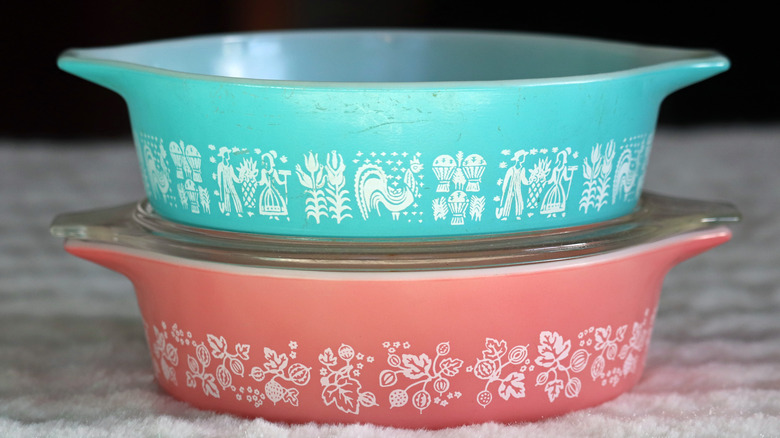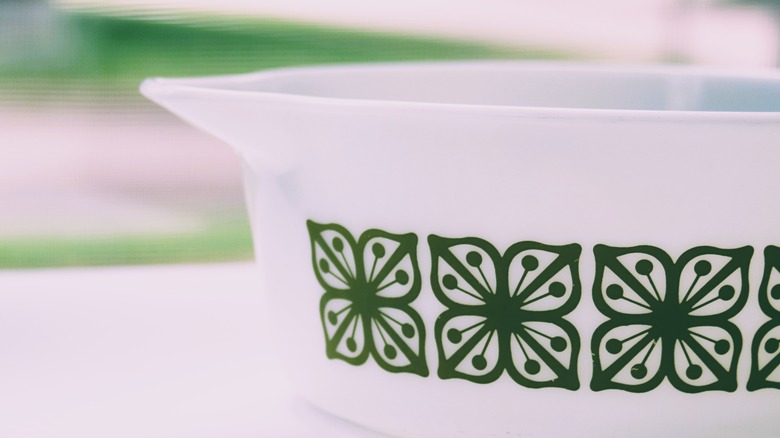Why It Pays To Brush Up On The History Of Vintage Cookware Before Buying
In a world of mass consumerism, there's a growing movement back to the kind of vintage cookware your grandmother's china cabinet would have been filled with. There are many reasons to choose vintage cookware over the new mass-produced goods. You'll find pieces made with better-quality materials than you see today, reusing what already exists is the sustainable choice, and you'll be adding character and charm back into your kitchen that simply can't be replicated. That said, when choosing vintage cookware, it pays to go in with a bit of knowledge and a discerning eye so you know what you're getting — because believe it or not, not all those items on antique store shelves are as they appear.
You don't need a history degree to spot the dupes from truly vintage cookware. If you're after authenticity, want to complete or replace pieces in a set, or are a history buff (or you just don't want to get overcharged!), it pays to research your favorite brands and lines. For example, if you're hunting rainbow-hued Fiestaware, it's good to know how to spot the original pieces from the 40s vs. modern renditions. Get on Google, which will be your best friend! There are many sites cataloging lines of Corningware or other popular vintage cookware brands like Bakelite, Pyrex, and others. They'll tell you helpful giveaways to look for like stamps, serial numbers, logos, and markings that can help you spot the true gems from the knock-offs or newer look-alike items.
Use your senses and look for telltale signs and markings
Once you find your fave brands and do a bit of high-level Google research on how to tell which items are vintage versus later remakes, you'll be armed with some great basic knowledge to help inform your browsing. Don't forget about the world of online vintage cookware on eBay and Etsy, too. When browsing the web, you'll still want to make sure there are included pictures showing the labels, serial numbers, or other markings to make sure you're getting the real deal.
If shopping in person, don't be afraid to pull out your phone and do some research on the spot to learn about the brand and age. Look at the underside of a dish and check for the label, which often gives away a lot of the info you need on cast iron, Corningware, and others. You can also use the Google Lens feature on your phone — just snap a photo and let Google help you identify the piece if it's a new-to-you brand. And use your senses — feel the items — true vintage cookware is often made with higher quality material than newer pieces, and you'll learn the difference in feel.
And at the end of the day, when sourcing vintage cookware, remember — nothing overrules personal preference. Does it spark joy for you? Then it doesn't matter the monetary value or authenticity — add to cart and enjoy your new-old piece for years.

